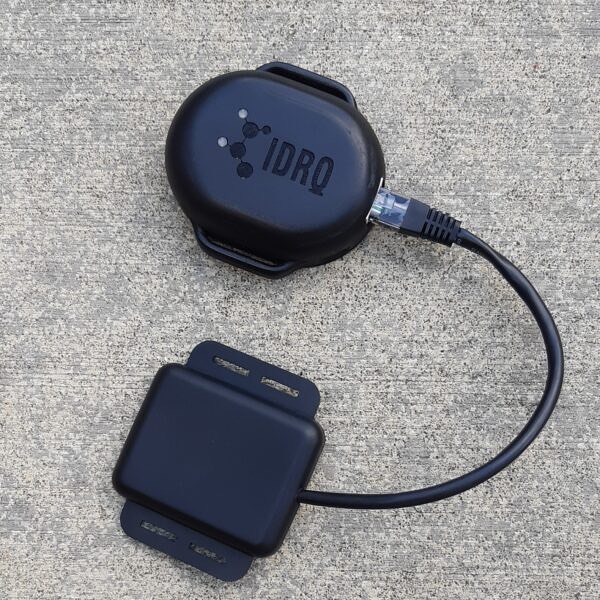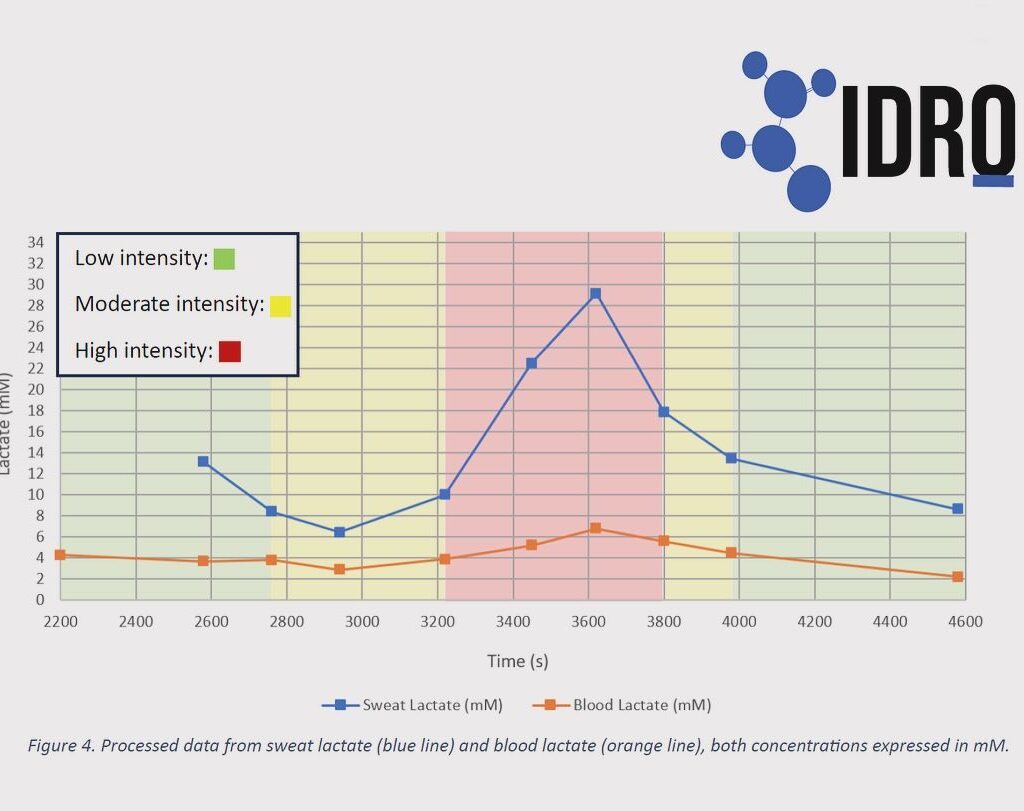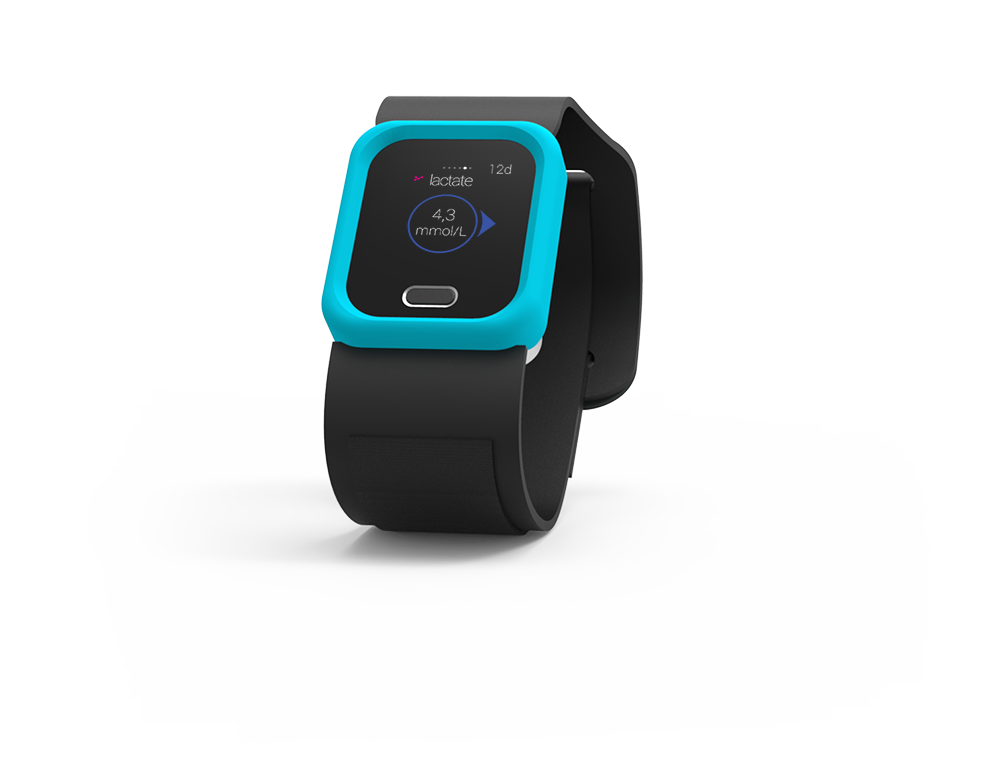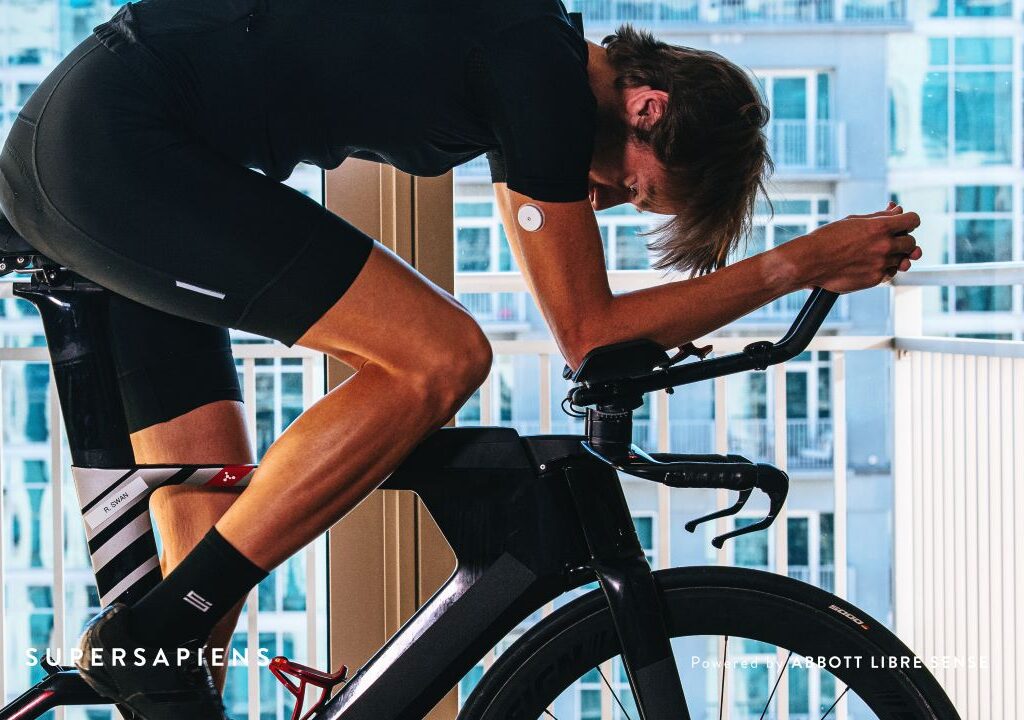CONTINUOUS LACTATE MONITOR DEVICES
There are several companies competing to be the first to launch a CLM on the market. Interestingly, they are using different types (measurement methods) of continuous lactate meters. The first continuous lactate biosensor will be launched in April 2024…
Here’s an overview of (soon to be) available continuous lactate monitoring devices:
IDRO CONTINUOUS LACTATE PATCH
The Belgium company IDRO has a working real-time lactate sensing smart patch. It measures lactate levels from sweat, and relies on an enzyme-based sensor.
Their CLM sensor also measures pH and skin temperature. Readings are streamed to your smartphone via bluetooth.
IDRO aims to launch their product in April 2024. Contrary to other companies, this goal seems very realistic, given the fact that the lactate patch is already used in scientific research and product demos.

IDRO continuous lactate monitor device based on sweat analysis (source: IDRO Instagram)
In the research, the sweat measurements of the IDRO device were compared with gold standard lactate measurements. A good correlation between both measurements was found (R² = 0,95) with a difference ranging from 2 to 11%.
IDRO continuous lactate measurements in sweat vs blood (source: IDRO Instagram)
Initially, IDRO will focus on providing their product to performance test centers and coaches. Afterwards they want to make their CLM available for all athletes.
Unfortunately, they were not yet able to communicate how much this continuous lactate monitor will cost. To get an idea of CLM pricing, we need to look at one of their competitors:
K’WATCH CONTINUOUS LACTATE WATCH
The French company PK Vitality announced that their K’Watch continuous lactate device will be available in 2024. It’s a wearable CLM, worn as an armband or watch.
K’Watch continuous lactate wearable (source: PKvitality)
The sensor measures lactate levels when in contact with the skin, without blood samples. This makes it a pain free monitor. The “SkinTaste technology” sensor measures lactate in the interstitial fluid (between blood vessels and cells). The sensor should be replaced every 30 days.
Pricing? This K’Watch continuous lactate monitor costs $199. The sensor costs an additional $90.90 per month. It will be available as soon as medical certification is being passed.
ABBOTT – LINGO
Contrary to the other two companies, Abbott is a company you may have heard of already. The Abbott libre sense glucose sensor is the sensor used by Supersapiens for continuous glucose monitoring.
Abbott libre sense glucose sensor, used by Supersapiens for continuous glucose monitoring.
During the Consumer Electronic Show (CES) 2022, Abbott launched their plans for a metabolic profile coach, Lingo. Lingo will continuously measure: glucose, lactate, ketone and alcohol. Watch the 5 minute presentation about Lingo here:
Rumours suggest Abbott will launch their lactate tracking system and app this year (2024). However, during the WIRED Health event in March 2023 Abbott repeatedly referred to 2028 in phrases like:
“In 2028, you may wake up to an app giving you personalized recommendations (…) We’re not there quite yet, but it’s not far off.” – Marc Taub (Abbott) in March 2023.
Regardless of when they will make their continuous lactate monitor available, it will probably be a huge competitor for all other companies.
Their existing continuous glucose sensor is a minimal invasive sensor, measuring glucose just underneath the skin. You need to replace the sensor every 14 days, but applying the sensor is painless. This biosensor costs roughly €160 per month, depending on your Supersapiens plan.
CONCLUSION: ARE CLMS WORTH IT?
Continuous lactate monitors are about to enter the market. Professional coaches and athletes say it will revolutionize athletic performance.
I personally believe CLMs indeed have the potential to join fundamental sensors like heart rate monitors and power meters. Contrary to continuous glucose monitors, I believe CLMs will be implemented and embraced much faster. That is due to the fact that many coaches and athletes already know what to do with lactate data.



